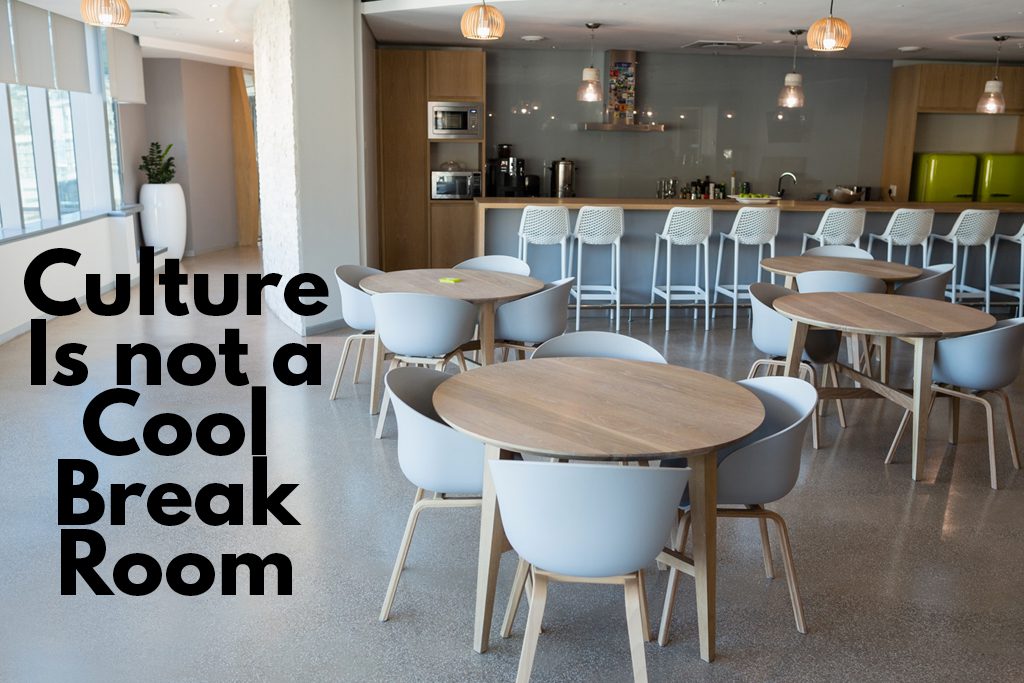The biggest business buzzword of 2019 is “culture.”
People talk about “improving culture” as a way to improve retention, client acquisition, evangelism … . Everyone wants to improve the “culture” at his or her business, but few can actually define it. Until we define it, we can’t improve it. Instead, we take wild stabs at it, like adding foosball tables and free haircuts.
In this series, I’m going to tell you how to define “culture” in your gym. Then I’m going to tell you how to measure it—and how to improve it. Finally, I’ll tell you a secret: There’s something far more important than culture when it comes to keeping staff, clients and yourself engaged.
What Is Culture?
Your personal culture is the sum of your 1:1 relationships.
Your gym culture is the sum of your 1:1 relationships with your clients.
Your staff culture is the sum of your 1:1 relationships with your staff.
Your culture is not how often your clients visit a bar together. It’s not how long they stick around after a workout or even what they’ll wear to get bonus points in the Open or an in-house competition. Your culture is relationships, and every relationship is 1:1.
You measure your culture by tracking the length of engagement (LEG) of your clients. Great culture keeps clients longer.
Culture in the Founder Phase
In the Founder Phase, your culture is the sum of your relationships between you and each client. You’re delivering your service yourself; if you build trust and empathy with your clients, you have a good culture.
A good relationship is a balance between friendship and objectivity. Your clients are not your friends, but your relationship must be friendly. You must stay professionally distant enough to charge money for your service; you must stay close enough to demonstrate you care. It’s not easy.
Culture in the Farmer Phase
In the Farmer Phase, your culture is determined by your clients’ relationships with your team and your team members’ relationships with you.
Your team must understand your vision (we call this “The Owner’s Intent”). They must also know that you care about their careers and have plans in place for them (we use the Career Growth ToolKit exercise in the Incubator and Growth programs). They must see the horizon and know they can achieve their career goals on your platform.
Then your team must deliver 1:1 relationships with your clients the same way you would. This is the most challenging part of being a Farmer: handing over the responsibility for client relationships. Every staff person will have different personalities, strengths and weaknesses. For example, one might be incredible at creating workouts for clients but might not have a strong sense of empathy. Or one might be creative but not quite organized enough. For this reason, we always build a safety net into the Farmer Phase: We add a client success manager role for 2-4 hours per week.
Culture in the Tinker Phase
In the Tinker Phase, your clients’ relationships should be with your brand. This means they have to align with your company’s values and vision. Now you have six relationships to manage:
—Your client’s relationship with your staff.
—Your client’s relationship with your brand.
—Your staff members’ relationship with their manager.
—Your staff members’ relationship with your brand.
—Your relationship with your direct reports.
—Your relationship with your brand.
In the Tinker Phase, we tell entrepreneurs to build a managerial layer (usually a chief operations officer or general manager, a chief financial officer and a chief sales officer or sales lead). These should be the owner’s three direct reports. In turn, they translate the owner’s intent, vision and mission to the staff.
Good Tinkers should be removed from daily operations but still available to staff who have unique situations. For example, the CEO shouldn’t be the one with the key to the supplies cabinet but should still be available to listen to a staff member with concerns about his or her career.
The Tinker must clearly define brand values. He or she must answer questions like:
“How does our service fulfill our goal?”
“What will we not do?”
“Who is our perfect client?”
“What is the perfect delivery of our service?”
“How far will we go to solve a customer’s complaint?”
She must also define the language and behavior used by the brand. For example, the Tinker must have:
—Staff playbooks.
—A quality control or evaluation process.
—A style guide for brand media.
It seems like the Tinker is too far removed from client interactions to influence company culture. But that’s not true: The Tinker’s role is to define and teach the company culture to key staff who then reinforce the culture by tracking client and staff relationships.
At this level, companies must track LEG as a measure of their client-facing culture; and they must track length of employment as a measure of corporate culture. Many businesses make wild guesses about “employee culture,” adding pinball machines and free breakfast cereal. But they fail to measure the effects of their actions on employee retention. That means they’re not taking their culture seriously; they’re just trying to look as cool as Google.
Measure Culture!
Like everything else in your business, culture is measurable. That means you can improve culture no matter how poor it is at present. The key is to focus on one relationship at a time and measure your progress.
Maybe monthly pub crawls do build a better culture in your business. It’s possible. But unless you’re tracking LEG, you’ll never know what’s actually helping your business.
Tomorrow, I’ll tell you how to improve your LEG scores. Later this week, I’ll tell you how to improve your staff retention.
Other Articles in This Series
Culture by Design
Culture Starts at the Top
Staff Culture and “Who Luck”
What’s More Important Than Culture?

